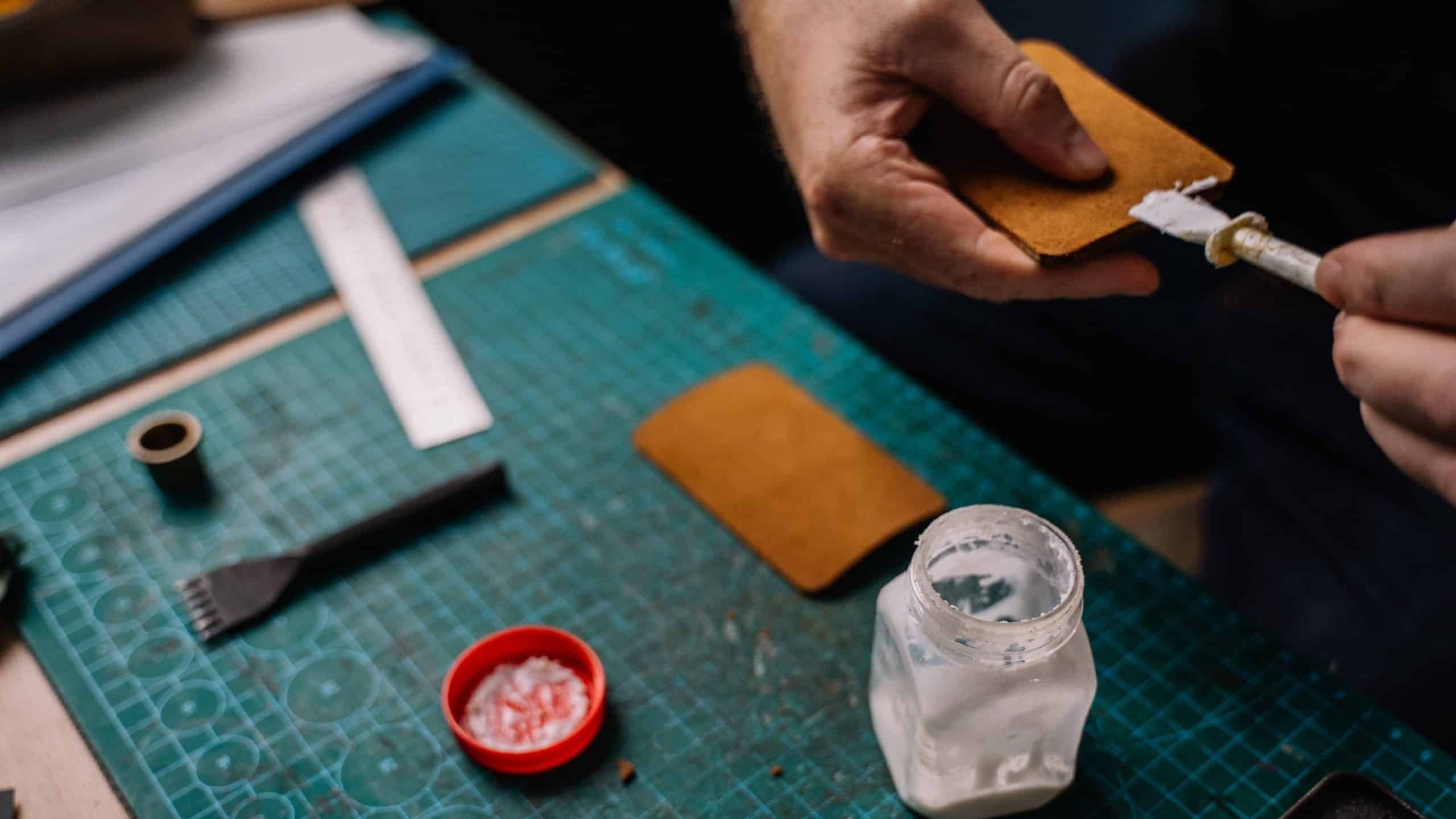
Although adhesive has been around for tens of thousands of years, this natural solution created from pine resin by Neanderthal man has evolved considerably since then. Whether for repair, assembly or fastening, glue’s fields of application are many and varied. Their components and manufacturing processes have also been modernized, so that the range of adhesives on the market today is very broad. Each has its own specific properties, so there’s bound to be a glue to suit your needs.
Originally a natural fixing solution created from organic or vegetable matter, adhesive is now more commonly found in synthetic form. A distinction is made between natural adhesives, which include bone glue, nerve glue and sap glue, and synthetic adhesives. As the former are reversible adhesives, they are more commonly used in traditional cabinetmaking and marquetry to bond wood, cardboard or fabric.
As the materials used in modern industry have evolved, new bonding solutions have had to be found to meet the demands of strength and watertightness. That’s why synthetic adhesives cover most of today’s market. There is a wide variety of synthetic adhesives, grouped into two main categories: contact adhesives and reactive adhesives.
Contact adhesives have a physical hold. In other words, they are composed of water-based or organic solvents that evaporate to leave the fixing agent (the adhesive) that will bond the contact surfaces. They are used for gluing porous materials. Contact glue is elastic and has good resistance, making it particularly interesting for assembling leather parts.
A number of adhesives fall into the category of physical setting adhesives:
Solvent-based adhesives
These liquid adhesives consist of a tacky substance (polyurethane, polychloroprene or rubber) dissolved in a solvent. When the latter evaporates into the air or through the materials, all that’s left is the adhesive, which returns to its solid form. Neoprene or polychloroprene glue, for example, falls into the category of solvent-based glues.
Water-based adhesives
Also known as dispersion adhesives, they are based on the same principle as solvent-based adhesives, except that the solvent used is mostly water. Water-based adhesives work after the water has evaporated, so they are harmless to health.
Hot-melt adhesives
Hot-melt adhesives are a category of thermoplastic adhesives. This means that the glue takes on a solid form at room temperature (in granules, flakes or sticks) before melting under the effect of heat and hardening again as it cools.
Reaction adhesives differ from contact adhesives in the way they react. This is a chemical-setting adhesive, i.e. the adhesive hardens via a chemical process. Reactive adhesives are highly adhesive. This category includes :
Epoxy adhesives
A dual solution, epoxy glue works thanks to the polymerization system (chemical reaction) that takes place between its two components: a resin and a hardener. It’s a highly effective adhesive in terms of bonding and resistance, particularly to temperature and humidity variations.
Polyurethane adhesives
Also known as PU adhesives, polyurethane adhesives harden on contact with air and humidity. Composed of polymers and chemical molecules, they can effectively bond all types of substrates, even those with low surface energy.
Cyanoacrylate adhesives
More commonly known as “instant glues”, cyanoacrylate glues are characterized by their rapid setting. Some formulations of this type of single-component adhesive can even achieve a setting time of 1 second. They polymerize in the presence of moisture and are often used for bonding small surfaces.
While knowing the main categories of industrial adhesives can help you to see things more clearly, it’s above all the application surface and its use that will determine your choice of professional glue.